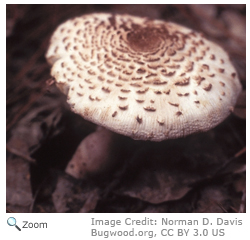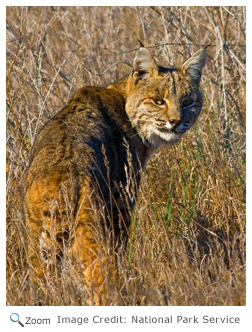One of Five
 All
life on earth falls into one of five categories. Monera, Protists, Fungi,
Plants, and Animals. Monera are microscopic organisms like
bacteria. Protists are single-celled microscopic organisms
like amoeba. Fungi are multicellular organisms like mushrooms
that live on other plants and animals. Plants are multicellular,
have a rigid cell wall and make their own food. Animals are multicellular,
and they rely either directly or indirectly on other organisms for food.
Within each kingdom there are thousands of species! All
life on earth falls into one of five categories. Monera, Protists, Fungi,
Plants, and Animals. Monera are microscopic organisms like
bacteria. Protists are single-celled microscopic organisms
like amoeba. Fungi are multicellular organisms like mushrooms
that live on other plants and animals. Plants are multicellular,
have a rigid cell wall and make their own food. Animals are multicellular,
and they rely either directly or indirectly on other organisms for food.
Within each kingdom there are thousands of species!
Just Like Me!
 A
species is a group of living organisms that can breed and reproduce offspring.
For example, a beaver is a species. It can breed with other beavers and
produce more beavers. It can't mate with a wolf and produce beavers! A
species is a group of living organisms that can breed and reproduce offspring.
For example, a beaver is a species. It can breed with other beavers and
produce more beavers. It can't mate with a wolf and produce beavers!
|
|
What's
In a Name?
 Scientists have a system for naming all the living organisms on earth. The system was devised by a Swedish scientist named Carolus Linnaeus over 200 years ago. He gave organisms two-word Latin names. Linnaeus decided that the first part of the Latin name should be the genus. The genus is a group name for species that are very similar. For example, the Canada lynx and the bobcat are part of the
genus Lynx. The genus name is always capitalized! The second part of the name is specific to each animal and usually is a word that describes the animal. The second part of the name is not capitalized and both parts are italicized. The Latin name for bobcat is Lynx rufus. Rufus is Latin for red or ruddy. Scientists have a system for naming all the living organisms on earth. The system was devised by a Swedish scientist named Carolus Linnaeus over 200 years ago. He gave organisms two-word Latin names. Linnaeus decided that the first part of the Latin name should be the genus. The genus is a group name for species that are very similar. For example, the Canada lynx and the bobcat are part of the
genus Lynx. The genus name is always capitalized! The second part of the name is specific to each animal and usually is a word that describes the animal. The second part of the name is not capitalized and both parts are italicized. The Latin name for bobcat is Lynx rufus. Rufus is Latin for red or ruddy.
Breaking It Up
 When scientists organize living organisms, they break them up into groups of decreasing size and separate them until they get down to the individual species. For example, the groups they use for animals, starting with the largest, are: Kingdom, Phylum, Class, Order, Family, Genus and Species When scientists organize living organisms, they break them up into groups of decreasing size and separate them until they get down to the individual species. For example, the groups they use for animals, starting with the largest, are: Kingdom, Phylum, Class, Order, Family, Genus and Species
Let's look at the bobcat as an example.
|